3 April
1538 – Death of Elizabeth Boleyn, Countess of Wiltshire and Ormond, wife of Thomas Boleyn and mother of Anne Boleyn. Click here to read more.
1559 – The second session of Parliament, in Elizabeth I's reign, met after the Easter break. Its purpose was to obtain parliamentary sanction for royal supremacy and Protestant settlement.
1559 – The Peace of Cateau-Cambrésis, ending the Italian Wars, was signed between Henry II and Philip II of Spain. Click here to read more.
1578 – Burial of Lady Margaret Douglas, Countess of Lennox and daughter of Margaret Tudor and Archibald Douglas, 6th Earl of Angus. She was buried in Henry VII's Chapel of Westminster Abbey.
1585 – Death of Thomas Goldwell, Bishop of St Asaph, in Rome. He had travelled to Rome at the beginning of the Protestant Elizabeth I's reign. He was buried in the convent of San Silvestro.
1606 – Burial of Sir Edward Fitton, member of Parliament and Elizabeth I's Receiver-General, in Gawsworth Church in Cheshire.
4 April
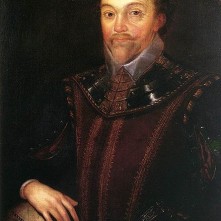
Sir Francis Drake
1483 – Death of Henry Bourchier, 1st Earl of Essex, great-grandson of Edward III and Lord High Treasurer. He was buried in Beeleigh Abbey.
1506 – Birth of Sir Edward Saunders, Chief Justice of the Queen's Bench in Elizabeth I's reign.
1572 – Birth of William Strachey, writer and historian of Virginia. William Shakespeare used Strachey's account of the 1609 shipwreck of the Sea Venture for his play “The Tempest”.
1581 – Francis Drake was awarded a knighthood by Elizabeth I. He was dubbed by Monsieur de Marchaumont on board the Golden Hind at Deptford. Click here to read more about Drake's life and achievements.
1589 – Death of Mildred Cecil (née Cooke), Lady Burghley, noblewoman, scholar and second wife of William Cecil, 1st Baron Burghley. Mildred was known for her standard of education and the library she built up.
5 April
1478 – Death of John Booth, Bishop of Exeter, at East Horsley. He was buried in the parish church there.
1513 – Treaty of Mechlin signed by Henry VIII, Maximilian I, Holy Roman Emperor, Ferdinand II of Aragon and Pope Leo X against France.
1531 - Richard Roose (or Rouse), Bishop John Fisher’s cook, was boiled to death after confessing to poisoning the soup (or porridge) that was served to the Bishop and his guests. Fisher, the Bishop of Rochester, survived, but some of his guests, who’d eaten more of the soup, died. Click here to read more.
1532 – Death of William Bolton, royal administrator and Prior of St Bartholomew’s, West Smithfield, London. In Henry VIII's reign, Bolton oversaw works in Henry VII's Chapel in Westminster Abbey, Hampton Court Palace and the rebuilding of New Hall. He died in London and was buried in his priory church, before the altar.
1533 – Convocation ruled on the case of Henry VIII's annulment, ruling that the Pope had no power to dispense in the case of a man marrying his brother's widow, and that it was contrary to God's law.
1559 – Funeral of Sir Anthony St Leger, Lord Deputy of Ireland, at the parish church in Ulcombe in Kent.
1588 – Birth of Thomas Hobbes, philosopher and author of the famous philosophical work, “Leviathan”, in Westport, Malmesbury, Wiltshire.
1605 – Death of Adam Loftus, Church of Ireland Archbishop of Dublin, in Dublin at the archbishop's palace of St Sepulchre. He was buried at St Patrick's Cathedral.
6 April
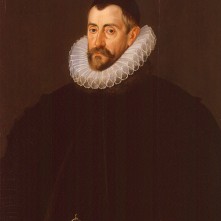
Sir Francis Walsingham
1523 – Death of Henry Stafford, Earl of Wiltshire. Stafford had served Henry VII and was made a Knight of the Garter in his reign, and although he was imprisoned for a time due to his brother's plotting, he was a favourite of Henry VIII.
1523 – Death of Edward Stanley, 1st Baron Monteagle, soldier, peer and Knight of the Garter, at Hornby Castle.
1593 – Hanging of Henry Barrow and John Greenwood, religious separatists, after being condemned to death on 23rd March, for writing and publishing seditious literature.
1582 – Hanging of Nicholas Nugent, Solicitor General for Ireland, Baron of the Irish Court of Exchequer, and Chief Justice of the Irish Common Pleas, for treason after being implicated in the rebellion of his nephew, William Nugent.
1590 - Death of Sir Francis Walsingham, Elizabeth I's principal secretary, at the age of about fifty-eight. Although he had served the Queen for many years, he died in debt, as he had underwritten the debts of Sir Philip Sidney, his son-in-law.
Walsingham was an incredibly important man during Elizabeth I’s reign, being a statesman, private secretary, adviser, diplomat and spymaster, and he probably saved the Queen’s life many times by uncovering various plots against her. Elizabeth called him her “Moor”.
1605 (5th or 6th) – Death of John Stow, historian and antiquary, in London at the age of eighty. He was buried in St Andrew Undershaft Church. Stow's works included his 1561 “The woorkes of Geffrey Chaucer, newly printed with divers additions whiche were never in printe before”, the 1565 “Summarie of Englyshe Chronicles” and his famous “Annales, or a Generale Chronicle of England from Brute until the present yeare of Christ 1580”.
1621 – Death of Edward Seymour, 1st Earl of Hertford, son of Edward Seymour, Duke of Somerset, and Anne Stanhope, and husband of Lady Katherine Grey (Lady Jane Grey's sister). He was aged eighty-one at his death, and had been married three times. His other wives were Frances Howard, gentlewoman of Elizabeth I's Privy Chamber, and widow Frances Prannell, who was the daughter of Thomas Howard, 1st Viscount Howard of Bindon. All three of his marriages were secret ones.
7 April
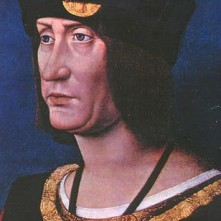
Louis XII
1498 – Death of Charles VIII of France and accession of Louis XII.
1537 – Robert Aske and Thomas Darcy, 1st Baron Darcy, were sent to the Tower of London. Aske was one of the rebel leaders in the 1536 Pilgrimage of Grace rebellion, and Darcy became involved with the rebels after yielding Pontefract Castle to them. Darcy was beheaded 30th June 1537, and Aske was hanged in chains on 12th July 1537.
1538 - Elizabeth Boleyn, Lady Wiltshire, wife of Thomas Boleyn and mother of the late Queen Anne Boleyn, was buried in the Howard Chapel of St Mary’s Church, Lambeth.
1571 – Burial of Richard Onslow, lawyer and Speaker of the House of Commons, in St Chad's Church, Shrewsbury.
1589 – Death of Sir Henry Gates, member of Parliament, Gentleman of Edward VI's Privy Chamber, Controller of the Petty Custom at the port of London, Receiver-General of the duchy of Cornwall and member of the Council of the North.
1590 – Burial of Sir Francis Walsingham, Elizabeth I's principal secretary, at St Paul's at 10pm in the same tomb as Sir Philip Sidney. He had died the previous day.
1619 – Burial of Robert Rich, 1st Earl of Warwick, at Felsted.
8 April
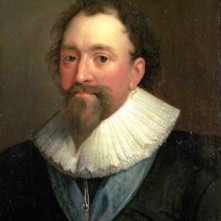
William Herbert
1554 - A cat dressed as a priest, a symbol of Catholicism, was found hanged on the gallows in Cheapside. Chronicler John Stow describes how the cat's head was shorn, it was dressed in vestments, and a "singing cake" (consecrated wafer) had been placed between its tied feet.
1580 – Birth of William Herbert, 3rd Earl of Pembroke, courtier, patron of the arts and son of Henry Herbert, 2nd Earl of Pembroke, and Mary Sidney, sister of Sir Philip Sidney.
1586 – Death of Martin Chemnitz, Lutheran theologian and a man known as "Alter Martinus" or the "Second Martin" after Martin Luther.
1608 – Death of Magdalen Browne (née Dacre), Viscountess Montagu and patron of Roman Catholics, at Battle following a stroke in January 1508. She was buried at Midhurst. Magdalen was the daughter of William Dacre, 3rd Baron Dacre of Gilsland and the second wife of Anthony Browne, 1st Viscount Montagu. She served as Maid of Honour at Mary I's wedding and was a staunch Catholic. Even though she was Catholic, she had a good relationship with Elizabeth I, following her and her husband's declaration that they would be loyal to the Queen if the Pope invaded or caused trouble. When the Queen visited the Montagus in 1591, they kept their priests hidden.
9 April

Edward IV
1483 – Death of Edward IV at the Palace of Westminster. He was laid to rest in St George's Chapel, Windsor Castle, on 20th April. His cause of death is unknown. It may have been caused by a chill, but he was known for overindulging in food and drink, and that would not have helped his health.
1533 - A delegation of the King’s councillors, headed by the Duke of Norfolk, visited Catherine of Aragon and informed her that Henry VIII was now married to Anne Boleyn. After they left, Catherine’s Chamberlain, Sir William Blount, 4th Baron Mountjoy, had to tell her that she had been demoted from Queen to Dowager Princess of Wales. Click here to read more.
1557 – Cardinal Reginald Pole's legatine powers were revoked by Pope Paul IV.
1582 – Death of Richard Bertie, evangelical, member of Parliament and second husband of Katherine Willoughby (other married name Brandon), Duchess of Suffolk, at Bourne. He had met Katherine when he became her Gentleman Usher. He was buried with Katherine, who died in 1580, at Spilsby.
1590 – Funeral of Ambrose Dudley, Earl of Warwick. He was laid to rest in the Beauchamp Chapel of St Mary's Church, Warwick.
1626 – Death of Francis Bacon, Viscount St Alban, Lord Chancellor, politician and philosopher. It appears that Bacon died from inhaling nitre or opiates in a botched experiment.

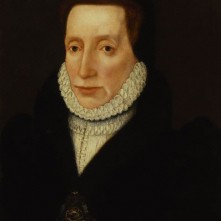
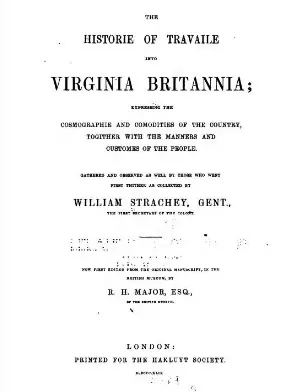
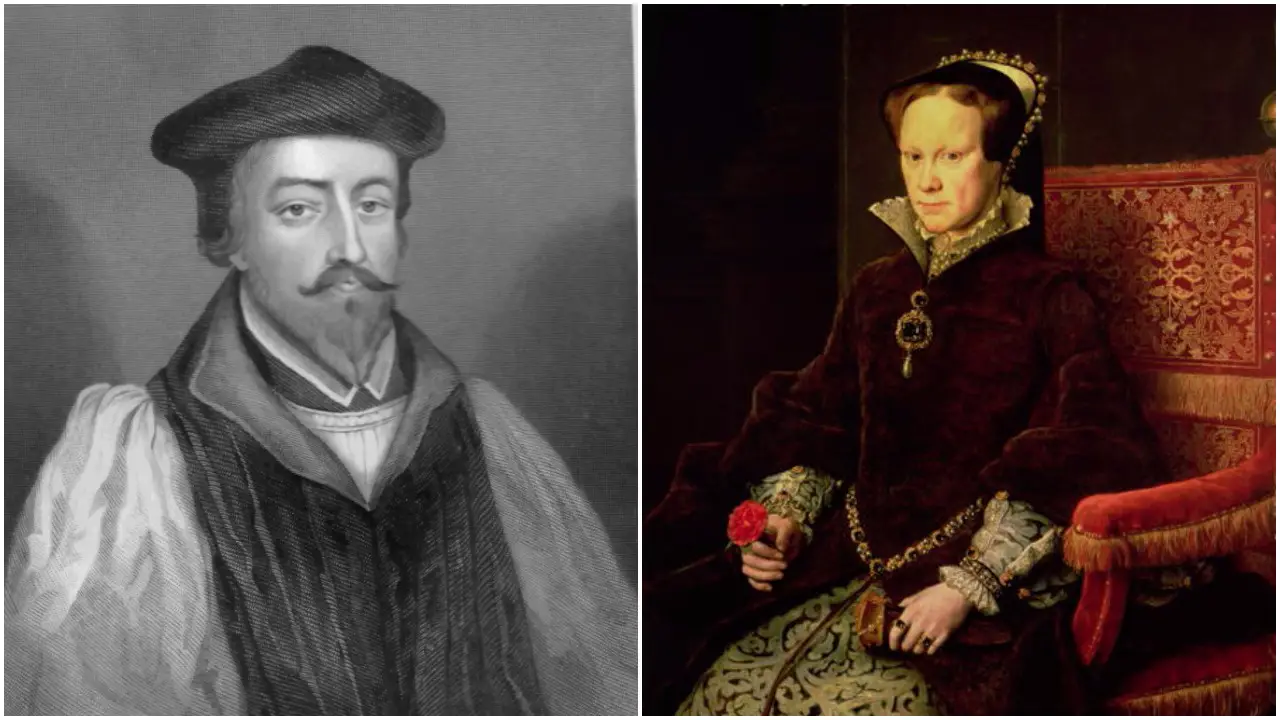
Leave a Reply